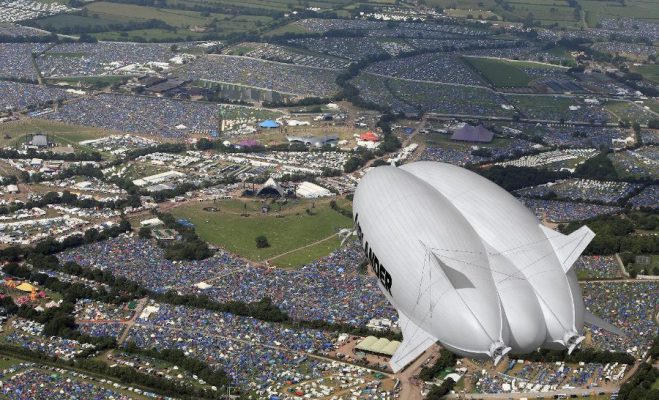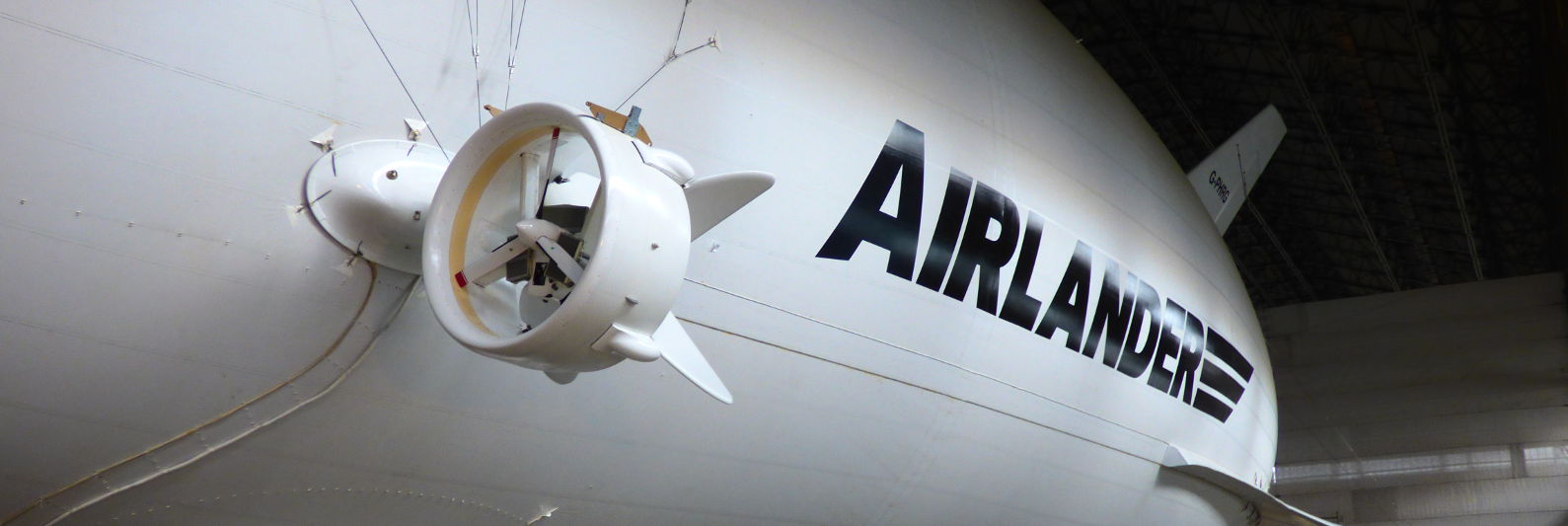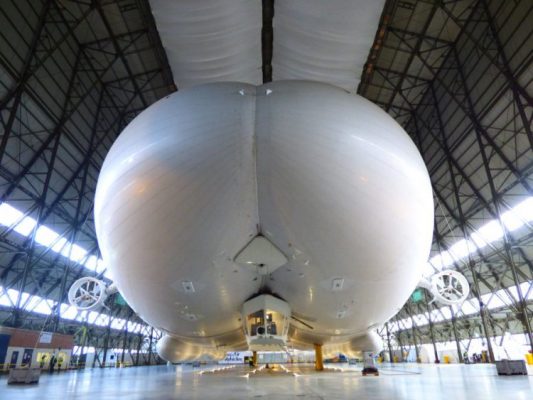
Unveiled in March 2016, the Airlander 10 has been gaining a following of aviation enthusiasts that counts Bruce Dickinson as one of its biggest fans.
Back in 2008 Bruce made a substantial investment into the development of this new type of hybrid aircraft after meeting Roger Munk, the man behind the idea.
“I’m not expecting to get my money back any time soon, I just want to be part of it. Being a rock person, I could put it up my nose, or buy a million Rolls Royces and drive them into swimming pools, or I could do something useful.”
“There are very few times in your life when you’re going to be part of something big.”
Source: https://www.theguardian.com/world/2015/mar/30/worlds-largest-aircraft-looking-for-investors-to-give-it-liftoff
When you see it’s impressive credentials you can understand the level of excitement this flying machine generates in aviation circles. It’s futuristic design and green thinking tackles head on many of the problems that the aviation industry faces. The Airlander 10 boasts a much reduced environmental impact, high levels of safety, no need for supporting infrastructure and the ability to directly access hard to reach areas.
A UK built hybrid aircraft manufactured by Hybrid Air Vehicles, the Airlander 10 is a unique fusion of airship, plane and helicopter design and is the world’s largest aircraft. Measuring 92 metres in length, 43.5 metres wide and 26 meters high, its massive hull holds 38,000 cubic meters of the inert gas helium. This provides 60% of its lift, with the other 40% coming from engine thrust and a unique curved aerodynamic design. A shape which has earned it the affectionate nickname of “the flying bum”.
Whilst big on scale, this airship is a gentle giant designed to have minimal impact on the world’s resources. It doesn’t need an airport or runway, or the supporting infrastructure, as it’s pneumatic skids allow it to take off and land vertically almost anywhere in the world. With an ability to handle extreme conditions such as ice and deserts, all it requires is flat terrain or water.
When it comes to fuel efficiency it can stay airborne for an incredible 21 days (unmanned) on the same amount of fuel a fighter jet uses in just one hour. It creates one quarter to a third less emissions than other aircraft, and has plans to be carbon neutral in the future by going electric and covering the surface with solar panels. Thereby revolutionising the emissions problem the aviation industry is currently facing.
The usefulness of this aircraft fires the imagination with its potential for the civil, military and leisure industries. Made of super-strong carbon fibre and with the ability to carry loads of up to 10 tonnes, the Airlander 10 is a green means of transporting cargo when high speeds are not required (its top speed is 92 mph). Or when vital machinery and resources need to reach inaccessible or hazardous areas.
It’s ability to hover for days or weeks at a time over landscapes make it the best choice for long term observation missions. Or as a luxury hotel in the sky boasting spectacular views over African plains or Arabian deserts. It could even be used for helping enhance communications such as wireless connectivity at festivals.
 With an ability to fly in extreme weather conditions, the Airlander 10 also offers improved safety for carrying out missions which would otherwise be deemed unsafe, such as search and rescue operations during storms at sea.
With an ability to fly in extreme weather conditions, the Airlander 10 also offers improved safety for carrying out missions which would otherwise be deemed unsafe, such as search and rescue operations during storms at sea.
Whilst still a prototype the Airlander 10 has generated interest across the globe as a revolutionary aircraft that can change the world. And with a price tag that is a fraction of the cost of a typical airliner, it provides a strong case for a cheaper, greener, safer alternative.
The Airlander 10 at a glance
- Operates in temperatures ranging from 54C (129F) to -56C (-68F)
- Top speed of 92 mph
- Reach altitudes of 20,000 ft
- Uses approximately one third less fuel than conventional aircraft
- Manufactured in the UK by Hybrid Air Vehicles
- Measures 92 metres in length, 43.5 metres wide and 26 meters high
- Carbon fibre hull holds 38,000 cubic meters of helium
- Can carry up to 50 people and 10 tonnes of cargo
- Able to stay airborne for 5 days when manned and over 2 weeks unmanned
With a background in commercial aviation and a trained pilot, Bruce Dickinson is one of the Airlander 10’s greatest supporters. If you would like to book him to speak at your next corporate event about his love of aviation and experiences within the industry please contact Dave Daniel at CSA. Email dave@speakers.co.uk or call +44 (0) 1628 601 411
More information: https://www.hybridairvehicles.com
Images courtesy of Hybrid Air Vehicles





